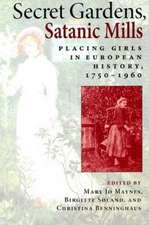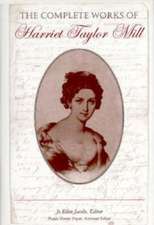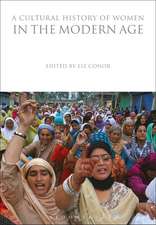The Spectacular Modern Woman – Feminine Visibility in the 1920s
Autor Liz Conoren Limba Engleză Paperback – 15 iul 2004
Preț: 227.78 lei
Nou
Puncte Express: 342
Preț estimativ în valută:
43.59€ • 45.03$ • 36.28£
43.59€ • 45.03$ • 36.28£
Carte tipărită la comandă
Livrare economică 26 martie-09 aprilie
Preluare comenzi: 021 569.72.76
Specificații
ISBN-13: 9780253216700
ISBN-10: 0253216702
Pagini: 360
Dimensiuni: 156 x 233 x 23 mm
Greutate: 0.5 kg
Editura: MH – Indiana University Press
ISBN-10: 0253216702
Pagini: 360
Dimensiuni: 156 x 233 x 23 mm
Greutate: 0.5 kg
Editura: MH – Indiana University Press
Cuprins
List of Illustrations
Preface
Acknowledgments
Introduction: The Spectacular Modern Woman
1. The Status of the Woman-Object
Part I. The Modern Scene
2. The City Girl in the Metropolitan Scene
3. The Screen-Struck Girl in the Cinematic Scene
4. The Mannequin in the Commodity Scene
Part II. Modern Appearing Women
5. The Beauty Contestant in the Photographic Scene
6. The "Primitive" Woman in the Late Colonial Scene
7. The Flapper in the Heterosexual Leisure Scene
Conclusion: Feminine Identity and Visual Culture
Notes
Bibliography
Index
Preface
Acknowledgments
Introduction: The Spectacular Modern Woman
1. The Status of the Woman-Object
Part I. The Modern Scene
2. The City Girl in the Metropolitan Scene
3. The Screen-Struck Girl in the Cinematic Scene
4. The Mannequin in the Commodity Scene
Part II. Modern Appearing Women
5. The Beauty Contestant in the Photographic Scene
6. The "Primitive" Woman in the Late Colonial Scene
7. The Flapper in the Heterosexual Leisure Scene
Conclusion: Feminine Identity and Visual Culture
Notes
Bibliography
Index
Recenzii
Providing an overview of the evolution of the modern woman who emerged in the 1920s, Conor (Univ. of Melbourne, Australia) shows that woman emerging from underneath clothing--first her legs, then her hands, and finally her torso. As modern women moved into the city, these urbanized women became more of a spectacle because of the availability of varied clothing styles and makeup--and images designed to make them want to purchase more feminine objects. These objects would allow them to cover and disguise unsightly and unpleasant female characteristics: menstruation, body hair, body odor. Not surprisingly, Conor focuses her discussion of colonialism on Australia, where Aboriginal women were considered less beautiful than white women. She ends with a discussion of the flapper as the representation of the emancipated urban woman, an image that pervaded the 1920s and came to represent the Jazz Age. Conor points out that even when the time came for women to more toward reinvention on their own terms, that emancipation continued to move in the direction of a spectacle meant to attract the opposite sex. Summing Up: Recommended. Graduate and research collections.--K. Gale, California Institute of the Arts, 2005may CHOICE
Notă biografică
Liz Conor completed her Ph.D. in women's studies at La Trobe University. She is an Australia Research Council postdoctoral research fellow in the Department of English at the University of Melbourne.
Descriere
How the "modern appearing woman" inaugurated a new relation between female identity and visual culture


















